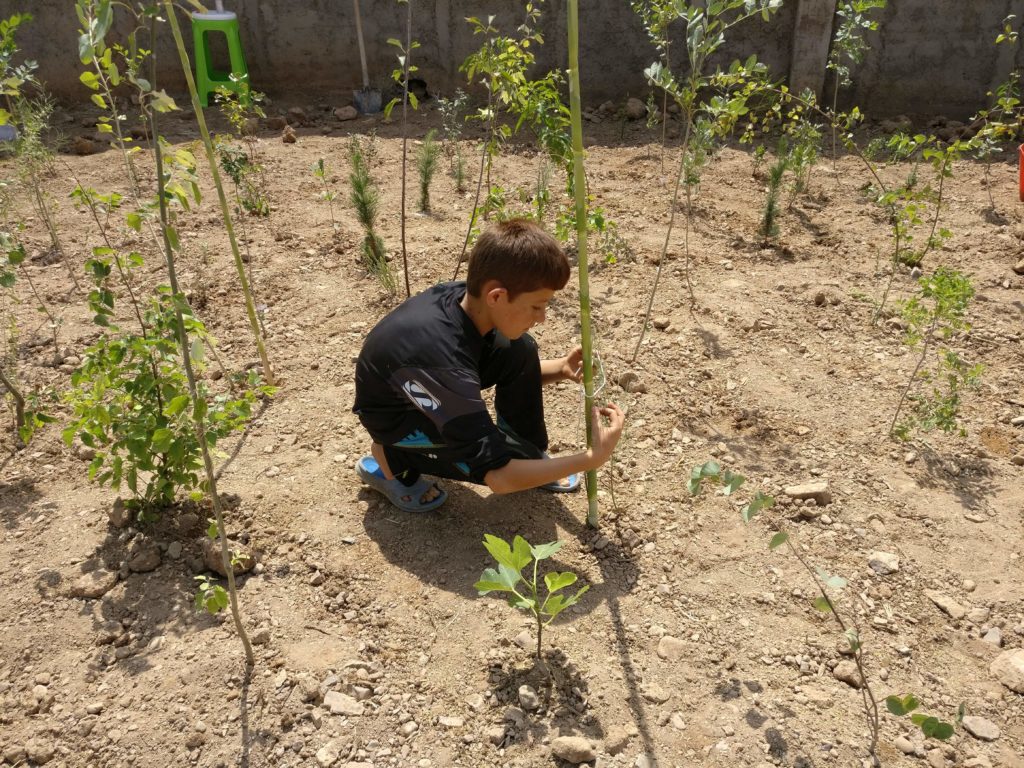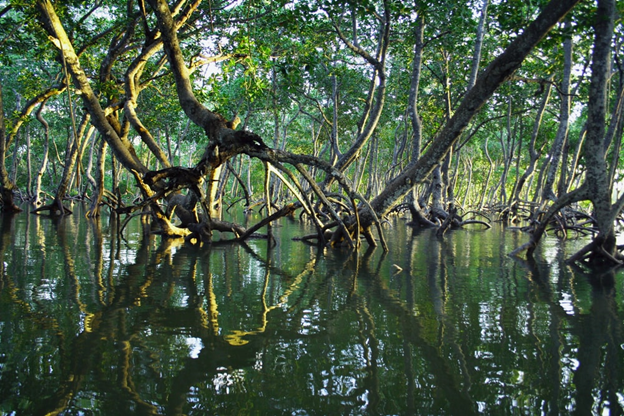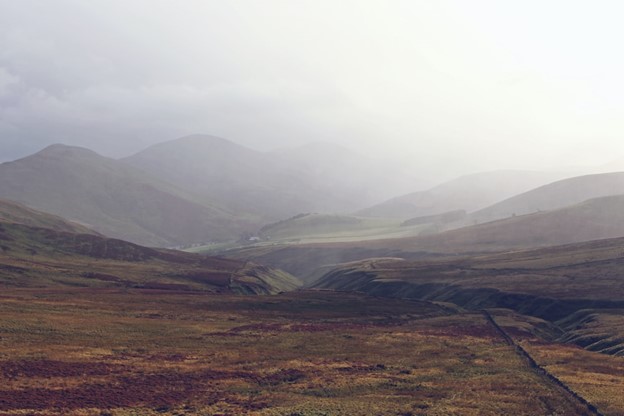The Crisis We Face And How Ecosystem Carbon Capture Can Help
Ecosystem Carbon Capture may spell the end of global warming issues. Even if our society were able to completely halt greenhouse gas emissions today, the Earth would continue heating for decades.1 Numerous studies indicate an overabundance of greenhouse gases have been released into the atmosphere. Firstly, since these gases can be long-lived, they could potentially continue trapping heat far into the future.2 Secondly, heat stored in the deep ocean can be released by ocean currents, regardless of whether we halt greenhouse gas emissions now.1 As dire as the situation appears, however, with mass, focused action, there may be a solution.
Carbon Sequestration And Ecosystem Carbon Capture
Society needs a way to capture carbon dioxide, the principal greenhouse gas, from the atmosphere. Removing carbon dioxide from Earth’s atmosphere is also known as carbon sequestration.3 Carbon sequestration has the potential to not only stop global warming, but also reverse the warming that has already taken place or will take place. There has been much talk of developing technological solutions for carbon capture, but another effective solution exists: preserving and restoring ecosystems that capture carbon dioxide naturally.4
How to Ecologically Sequester Carbon And Ecosystem Carbon Capture
There are two main ways to help ecosystems sequester atmospheric carbon dioxide. The first method is preservation: if we preserve ecosystems that are already sequestering carbon dioxide, they will continue to do so, helping decrease levels of this greenhouse gas in the atmosphere. The second method is restoration: re-establishing carbon-sequestering ecosystems on degraded land can further remove excess carbon dioxide from the air.
There are a multitude of different natural ecosystems on Earth, many of which effectively sequester carbon dioxide. Additionally, carbon dioxide can also be sequestered through biological and low-tech processes that aren’t centered on native ecosystem health. Examples include regenerative agriculture, which stores carbon in the soil while producing food, or growing non-native bamboo plantations, a resource that can be harnessed for a variety of purposes.4
These methods certainly have a place in averting climate change, and many different types of ecosystems should be preserved and restored. In this article, however, we will focus on the three main categories of terrestrial ecosystems that capture carbon: forest ecosystems, coastal wetlands, and peatlands.
Forest Ecosystems
Trees are one of nature’s best technologies for storing carbon dioxide. Through photosynthesis, trees take in carbon dioxide and water and produce oxygen, while storing carbon in glucose within the organism. Tropical forests, such as the Amazon rainforest, as well as other forest ecosystems, such as the coastal Redwood forest in California, need to be preserved and restored to enhance their carbon capture potential. This low-tech carbon sequestration capacity of forest ecosystems is naturally powered by trees.

Deforestation through logging, wildfire, encroaching agriculture, and development is a threat to forest ecosystems. Deforestation needs to be countered by preservation, with laws limiting the destruction of forests so the trees within them can continue capturing carbon.

Afforestation, or planting trees, is a way of restoring forest ecosystems for carbon sequestration.4 Afforestation is also most effective as a restorative process when native trees are planted on formally degraded or unused land.
One example of an ecologically sound technique of restoring forests is the Miyawaki method. The Miyawaki method of afforestation was developed by Japanese botanist Akira Miyawaki, and shows how to restore biodiversity and carbon sequestration potential to degraded land by planting native trees, native shrubs, and other native flora close together in soil that may be depleted of organic matter.4 The Miyawaki method creates a self-sustaining forest after the first two years of weeding and watering the rehabilitated ecosystem.4

Preserving and planting trees is not the only way to sequester carbon in an ecosystem. Ecosystems can also sequester carbon in other plants and roots, as well as in the soil. Coastal wetlands do just that.
Coastal Wetlands
Wetlands, such as the Everglades in Florida, sequester carbon in plants like sawgrasses and lilies through photosynthesis. Coastal wetlands also store carbon in their soils as the dead plants build up and break down through anaerobic processes. Wetlands may be able to store around five times as much carbon as tropical forests over the long term, due to the unique way wetland plants decompose underwater.4

As with terrestrial forest ecosystems, it is critical that we focus on preserving healthy and functioning coastal wetlands, so that they can continue to perform their carbon capture ecosystem service. Limits on run-away urbanization can help protect both forests and coastal wetlands, as IDEAS for Us described in the blog “Protecting Natural Lands in Florida: Saving Florida”.5
This ecosystem can also be restored, although restored coastal wetlands generally don’t have the carbon capture potential of coastal wetlands that have remained healthy.4 Removing infrastructure such as dikes, ditches, drainage, and even roads in coastal wetlands is one way to restore these ecosystems.4 In mangrove coastal wetlands, for instance, mangroves can be replanted. Finally, wetland trash cleanups can aid in the revitalization of coastal wetlands by removing pollutants and allowing plant regrowth as a result of clearing the wetland surface area of garbage.
Coastal wetlands are an effective carbon sink, sequestering carbon dioxide from the air. A related ecosystem, peatlands, offers this ecosystem service as well.
Peatlands
Peatlands are a waterlogged ecosystem made up of peat, a thick, mucky soil, and the flora and fauna adapted to live in this nutrient-scarce soil environment. Plants that live in this environment include sedges, mosses, carnivorous sundews, and orchids.4 Peatlands are a type of wetland, but unlike the broader category of coastal and non-coastal wetlands, peatlands can hold up to ten times the carbon of other ecosystems.4

A large swath of peatlands can be found in the Congo, as discussed in the IDEAS for Us blog “Protecting the Peatlands: Congo’s Carbon Time Bomb”. This blog argues that preserving peatlands is crucial for averting the worst effects of climate change.6 Peat sequesters carbon that has been drawn out of the air by plants, and these plants build up in the waterlogged peat but fail to decay in a way that re-emits much carbon dioxide to the atmosphere. Instead, the plants decompose through chemical anaerobic processes.4 Therefore, peatlands act as an effective carbon-sequestering ecosystem.
Preserving peatlands through land preservation is vital for helping prevent and reverse climate change. In Southeast Asia, peatlands are often set on fire to clear these ecosystems for oil palm plantations.4

Another way to enhance the carbon-capture potential of peatlands is to restore degraded peatlands through rewetting, or saturating dried-out peat, and raising the water table.4 Paired with paludiculture, growing native marsh plants on restored peatlands, rewetting can increase the carbon-capture capacity of degraded peatlands so that the anaerobic decomposition processes resume, storing atmospheric carbon in peatlands.4
How To Take Action
To help reverse global warming through ecosystem carbon sequestration, preservation is key, and supporting policies that preserve land for forest ecosystems, coastal wetlands, and peatlands is something you can do in this space. For example, right now, you could sign the petition to protect Florida wetlands, part of the set of five environmental petitions known as the Florida Five that could become law in Florida.7 A second example of related state policy involves the plan to build extensive toll roads through Florida forest ecosystems.8 You can voice your opposition to these policies by emailing your state representatives.
Another way to preserve carbon-capturing ecosystems is to alter your diet, cutting out foods made with palm oil, the production of which degrades peatlands as well as tropical forests.4 Reducing the amount of beef you eat can also help to prevent deforestation in the Amazon rainforest for cattle ranching.9
You can take part in the restoration of carbon-sequestering ecosystems, too. IDEAS for Us hosts many native tree plantings to restore forested areas around the world, as well as wetland trash cleanups. While some processes like rewetting peatlands require more than individual action, support for government policies to restore carbon-capturing ecosystems is important for reversing climate change.
As the recent IPCC report declares, we are in code red for humanity because of climate change.11 Yet we still have the capacity to halt or even reverse global warming through ecosystem carbon capture, if we come together and take drastic action now.
Sources
1. Herring, David and Rebecca Lindsey. “Can We Slow Or Even Reverse Global Warming?” Climate.gov, NOAA, 29 October 2020, https://www.climate.gov/news-features/climate-qa/can-we-slow-or-even-reverse-global-warming
2. Sim, Vera. “What Would Happen To The Climate If We Stopped Greenhouse Gas Emissions Today?” Earth.org, Earth.org, 1 September 2020, https://earth.org/what-would-happen-to-the-climate-if-we-stopped-greenhouse-gas-emissions/
3. “What Is Carbon Sequestration?” Energy, USGS. https://www.usgs.gov/faqs/what-carbon-sequestration?qt-news_science_products=0#qt-news_science_products
4. Hawken, Paul. Drawdown: The Most Comprehensive Plan Ever Proposed to Reverse Global Warming. New York, Penguin, 2017.
5. Urban, Kristin. “Protecting Natural Lands in Florida: Saving Florida.” IDEAS for Us. 15 September 2020. https://ideasforus.org/protecting-natural-lands-in-florida-saving-florida/
6. Ahearn, Tori. “Protecting the Peatlands: Congo’s Carbon Time Bomb.” IDEAS for Us. 14 October 2020. https://ideasforus.org/protecting-the-peatlands-congos-carbon-time-bomb/
7. fl5.org. https://fl5.org/
8. Cassels, Laura. “Law Makers Aim to Replace Massive Toll-Roads Project with Less-Massive Toll Roads Project.” Florida Phoenix. 19 March 2021. https://floridaphoenix.com/2021/03/19/lawmakers-aim-to-replace-massive-toll-roads-project-with-less-massive-toll-roads-project/
9.” Brazil beef giants linked to illegal Amazon deforestation.” Mongabay. 11 December 2020. https://news.mongabay.com/2020/12/brazil-beef-giants-linked-to-illegal-amazon-deforestation/
10. Masson-Delmotte, V., P. Zhai, A. Pirani, S. L. Connors, C. Péan, S. Berger, N. Caud, Y. Chen, L. Goldfarb, M. I. Gomis, M. Huang, K. Leitzell, E. Lonnoy, J. B. R. Matthews, T. K. Maycock, T. Waterfield, O. Yelekçi, R. Yu and B. Zhou (eds.). “IPCC, 2021: Climate Change 2021: The Physical Science Basis. Contribution of Working Group I to the Sixth Assessment Report of the Intergovernmental Panel on Climate Change.” Cambridge University Press. In Press. https://www.ipcc.ch/report/ar6/wg1/
Picture Sources
1. Nargi, Lela.”The Miyawaki Method: A Better Way to Build Forests?” JSTOR Daily. 24 July, 2019. Courtesy of Afforestt. https://daily.jstor.org/the-miyawaki-method-a-better-way-to-build-forests/








